

We are excited to share more about our work to maximize its reach and beneficial impact. This includes posts that highlight our thinking, resources that explain what we are building, and sharing novel datasets that we think can benefit the work of others.
Click here to access the Othersphere Data Center Atlas
What does the market view as a good data center location? This is something we can clearly observe based on how data centers are deployed today.
But how will the definition of a successful project evolve over time? And how might this differ across different classes of data centers?
Planning for the long-term, it is important that markets and policymakers are intentional about their expectations and requirements for these assets, as the role of data centers in economic growth, energy demand, climate outcomes, and geopolitical stability will all undoubtedly increase.
Then in the near-term, the risk of data center investment bubbles and market swings appear very high. As such, the ability to target data centers with strong fundamentals that will succeed in both good times and bad is essential.
History smiles on those who build commoditized industrial infrastructure in locations with the best fundamentals, so who will be the 'Saudi Arabia of compute'? The race to acquire power for these information refineries is the dominant narrative today. But when the smoke clears it will be key long-term fundamentals that matter to operators, policymakers, investors, communities, and beyond.
With this framing in mind, this Data Center Atlas is our contribution to inform a more data-driven view of the shape of the global data center fleet today, and how this may evolve over time.
At launch this Atlas includes a sample of the metrics we use to evaluate existing and potential data center locations. Here we highlight trends at the thousands of sites around the world that host data centers today, drawn from the over 180 million locations that Othersphere models worldwide. We are also experimenting with AI-generated/human-reviewed context for each metric; with AI model outputs shaped by the data provided from our backend.
This living document is also a pilot for future report-centric products on data centers and other industrial sectors, helping us understand needs around:
Reach out to learn more or provide feedback, and in the meantime, thanks for reading!
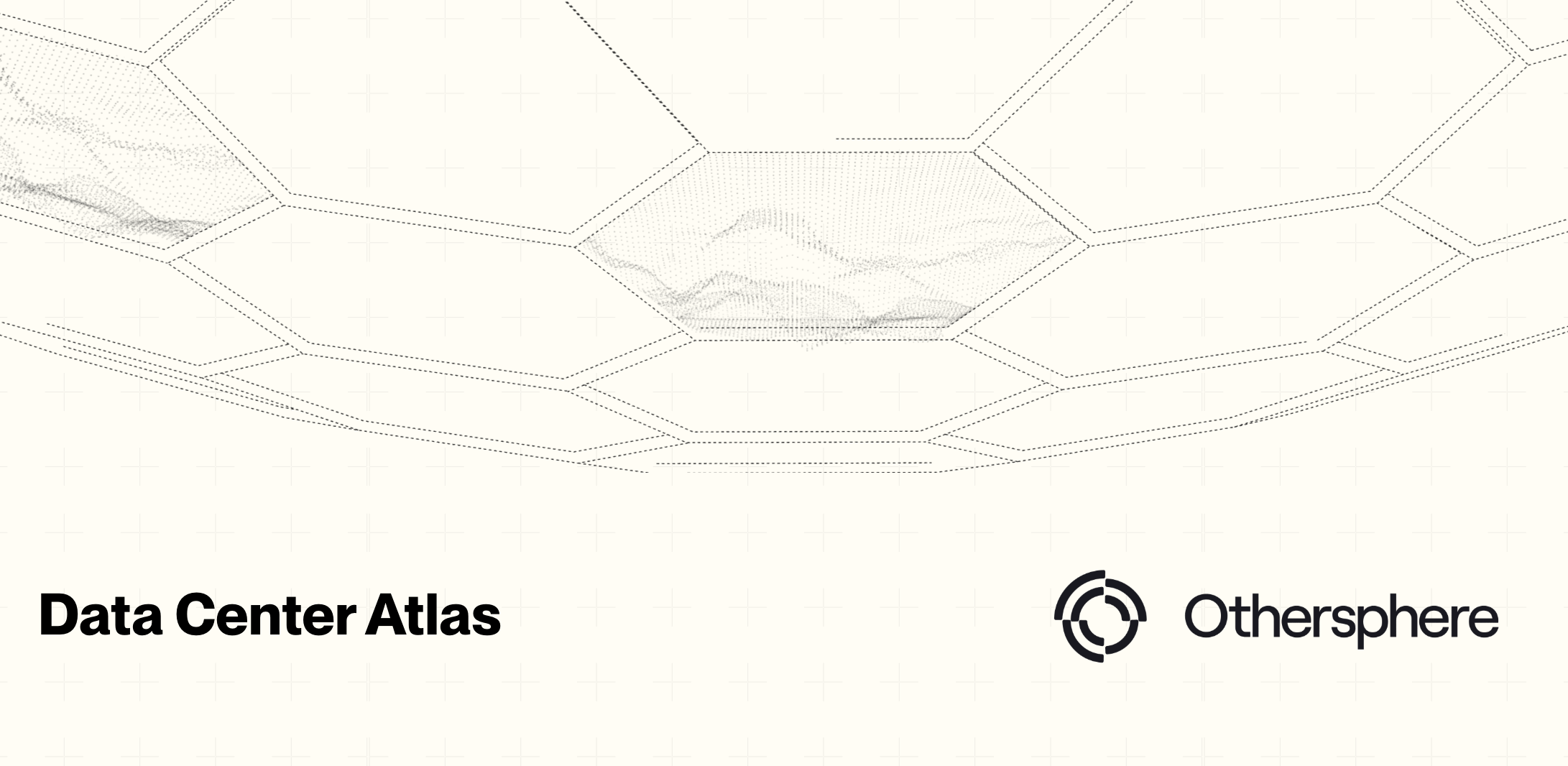
What does the market view as a good data center location? This is something we can clearly observe based on how data centers are deployed today.

VICTORIA, BC, Sept. 9, 2025 /PRNewswire-PRWeb/ -- Othersphere announced its participation in Google's AI for Energy program, with the collaboration focused on accelerating deployment of innovative report-based intelligence products for data centers, hydrogen production, and other energy-intensive infrastructure.
Expanding on Othersphere's existing enterprise software products, these reports utilize rigorously structured platform data from Othersphere to guide generative AI—delivering powerful new products tailored to project or portfolio design and diligence.
Key Highlights
"By combining Othersphere's data and asset modeling with generative AI, we're giving infrastructure decision-makers something they've never had before: instant, reliable insight at the scale of the global market," said Robert Murphy, CEO of Othersphere.
Market Impact
These reports will be available on a standalone, targeted basis, and will also be integrated into Othersphere's Explorer software products. By layering narrative-level synthesis atop rigorous global data and detailed modeling, Othersphere enables:
About Othersphere
Othersphere accelerates deployment of high-performance industrial infrastructure. This search engine for sustainable infrastructure is driven by vast amounts of consolidated global data, and billions of bottom-up project models, across millions of individual locations. Backed by Breakthrough Energy Fellows, Othersphere enables infrastructure stakeholders such as project developers, OEMs, financiers, and operators to reduce costs, accelerate action, and improve long-term asset performance. Visit www.othersphere.io to learn more.
About Google AI for Energy Program
The AI for Energy program focuses on grid optimization, demand flexibility and energy solutions for customers, including utilities and commercial entities. By supporting advancements in areas such as interconnection queues and carbon-aware infrastructure, the Accelerator aims to drive innovation, sustainability, and reliability in the energy landscape. Learn more about the Google for Startups Accelerator: AI for Energy program here.
Contact
For more information about these new report offerings, or to explore integration into your work, contact:
Othersphere Systems Inc.
Phone: +1 (236) 428‑4400
Email: press@othersphere.io
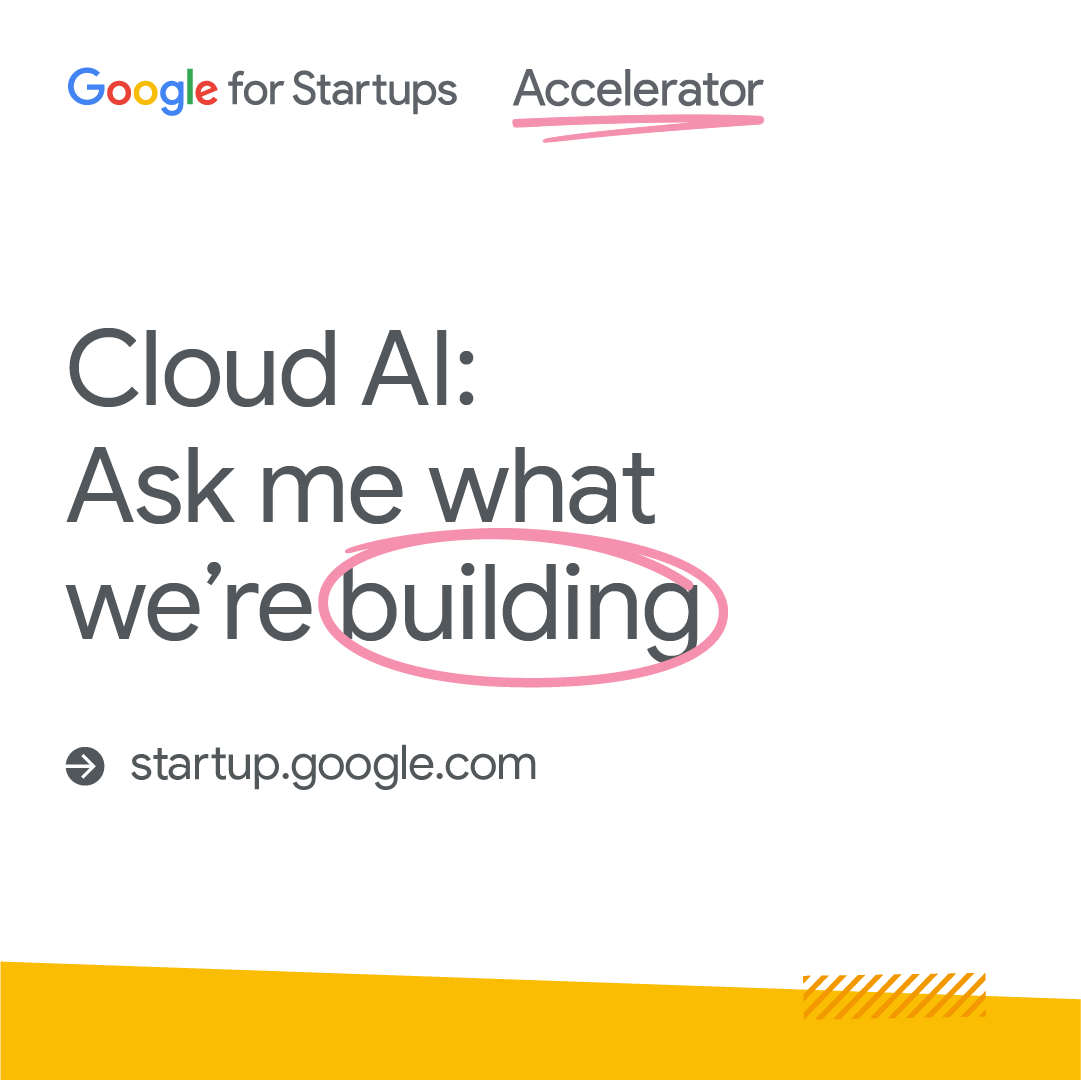
Othersphere announced its participation in Google's AI for Energy program, with the collaboration focused on accelerating deployment of innovative report-based intelligence products for data center, hydrogen production, and other energy-intensive infrastructure development.

Part 1 of 3: Defining the needle and the haystack
Finding the right location for an infrastructure project means solving a multidimensional optimization problem where all the variables interact in complex ways. How much does grid power price matter compared to land cost? What about solar availability? How do you weigh transportation infrastructure against the regulatory environment? How do you move fast, while also meeting your critical economic and sustainability goals?
The traditional approach involves firing up GIS tools, gathering data, and trying to filter through data layers with different time periods, formats, etc. This can include factors such as electricity prices, infrastructure maps, land costs, renewable resource maps, and many, many more. Maybe you have a secret sauce, but I bet you’ll miss hidden gems - the sites that aren't obviously attractive but deliver exceptional economics when all factors are considered together.
We've been working on a different approach: searching based on the characteristics of an individual location AND how all of those factors come together into the north star for most developers, operators, and financiers - the ROI of your project (NPV, IRR, LCOE, or whatever metric means success for you).
This article will first talk about the challenges of our initial approach for modelling hydrogen production costs. We’ll then describe our new approach: allowing users to upload their own project economic models to be run on our data platform. To wrap up, we’ll outline the next two blog posts: how we execute user provided economic models on our GPU-accelerated optimizer, to find the perfect sizing and configuration for your project; and finally, how we use neural networks to run your optimized economic model over the whole globe, allowing you to find your needle-in-a-haystack with a simple search.
When we built our first tool, for hydrogen project siting, we took what seemed like a reasonable approach: we built a comprehensive LCOH (Levelized Cost of Hydrogen) model that captured all the key economic factors and allowed users to customize the variables that mattered most.
Users could adjust numerous factors including:
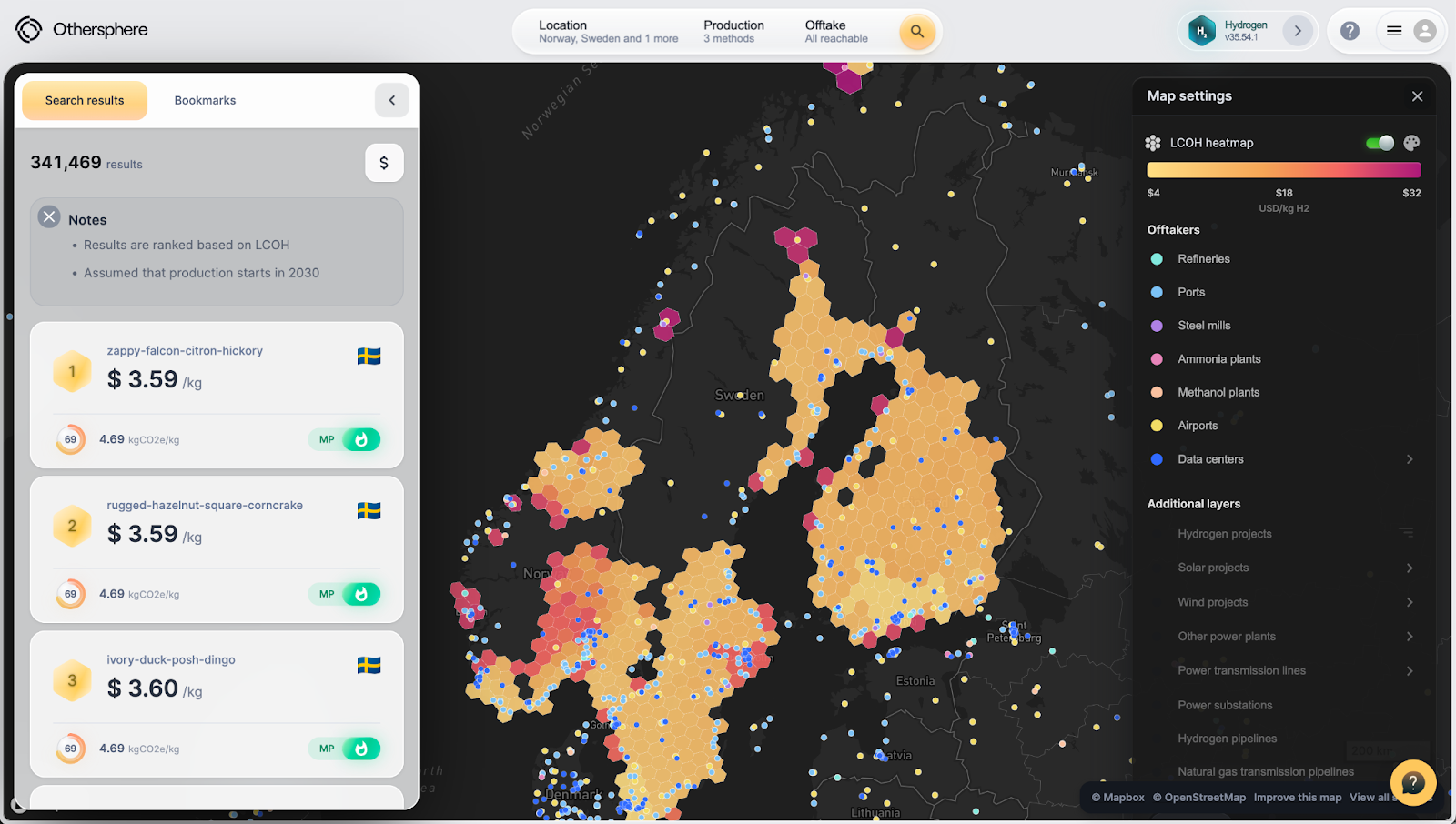
The system would then calculate LCOH and IRR for any site using our hardcoded model structure. It worked well for standard projects, but we kept hitting the same wall: users wanted to modify the model itself, not just the inputs. We also wanted to expand our platform to projects other than hydrogen production, such as data centers.
We realized we were solving the wrong problem. Instead of building increasingly complex configuration options for our hardcoded model, we needed to let users bring their own economic models entirely.
The solution turned out to be surprisingly straightforward: let users upload their own Excel models.
We created an Excel template that defines the interface between user models and our geographic data. Users can either customize one of our provided models or build their own from scratch. The template handles the data injection - our system knows how to feed location-specific data into the designated cells, and the model handles everything else.
This approach preserves the sophistication of user models while enabling them to run anywhere in the world using our data platform. Your carefully crafted depreciation schedules, custom financing structures, and cost models all work exactly as designed - dynamically fed with real-world data.
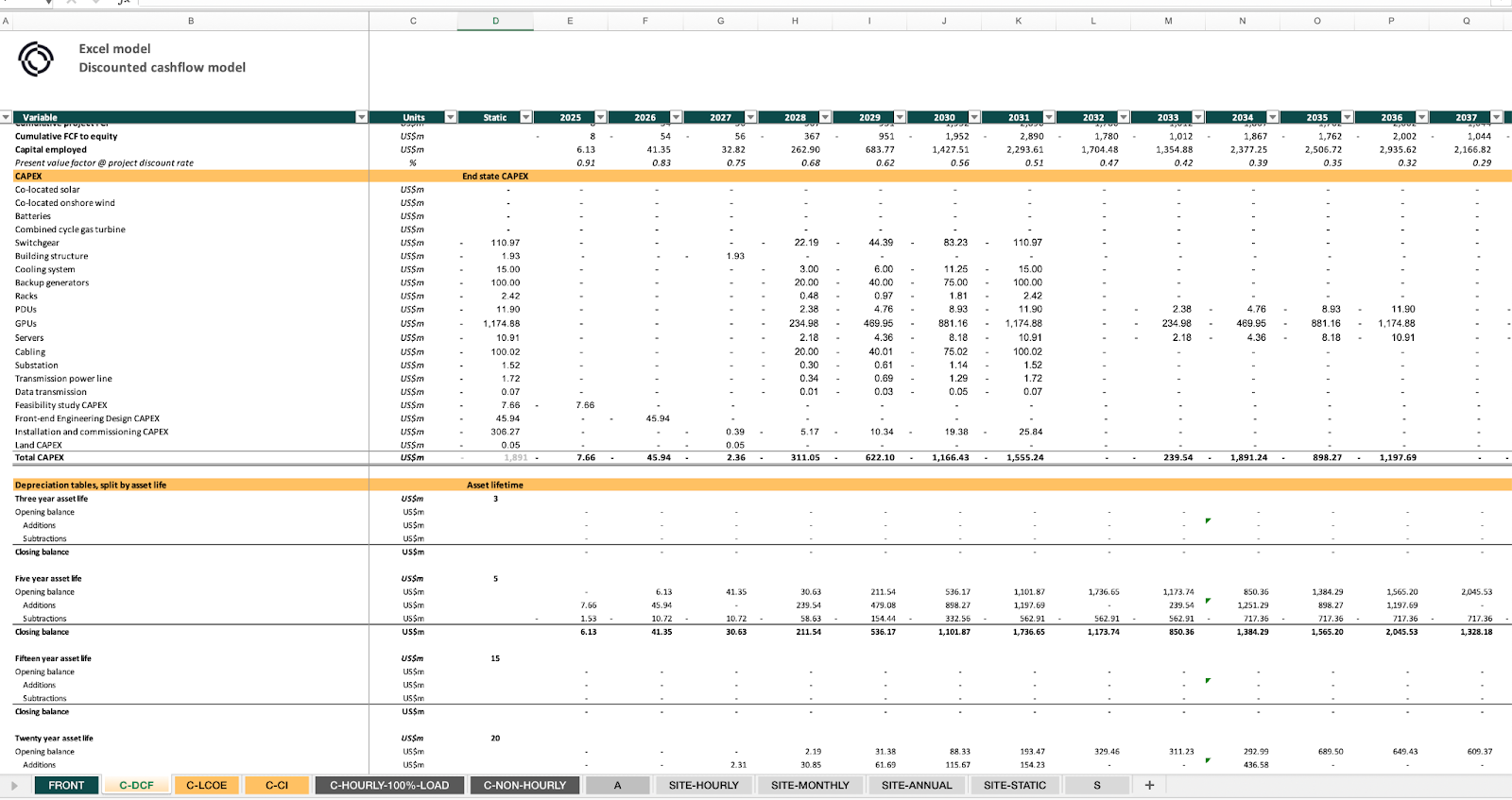
The process is simple:
Behind the scenes, when you click on a site in, say, Wyoming, or Bavaria, our system instantly injects our rich datasets for that location, including:
Your Excel model processes this data exactly as it would with any other inputs, but now it's using real-world, location-specific information saving you the trouble of finding the data or the dangers of generic assumptions. The power of this is also in the comparative view, so rather than just evaluating one site to see if it clears your viability hurdles, you can evaluate any site to find the strongest option. Choose exceptional, rather than just acceptable.
You can export your model with these values injected, or browse the data within our Explorer tool. (You can also click to run our GPU-accelerated optimizer, but that’s for the next blog post.)
The complexity multiplies when you consider that you're not just searching for locations—you're searching for the optimal combination of location, project configuration, and operational parameters.
For hydrogen production, you might be evaluating:
For data centers:
Each combination creates a different economic profile, and the optimal choice varies by location. A site that's perfect for a GPU-intensive data center with solar power might be terrible for a CPU-focused facility relying on grid electricity.
Our Excel template lets you easily define these various options and, on choosing a particular site, our tool will run your model for every such option for you to then browse within our tool - or export back as an Excel file.
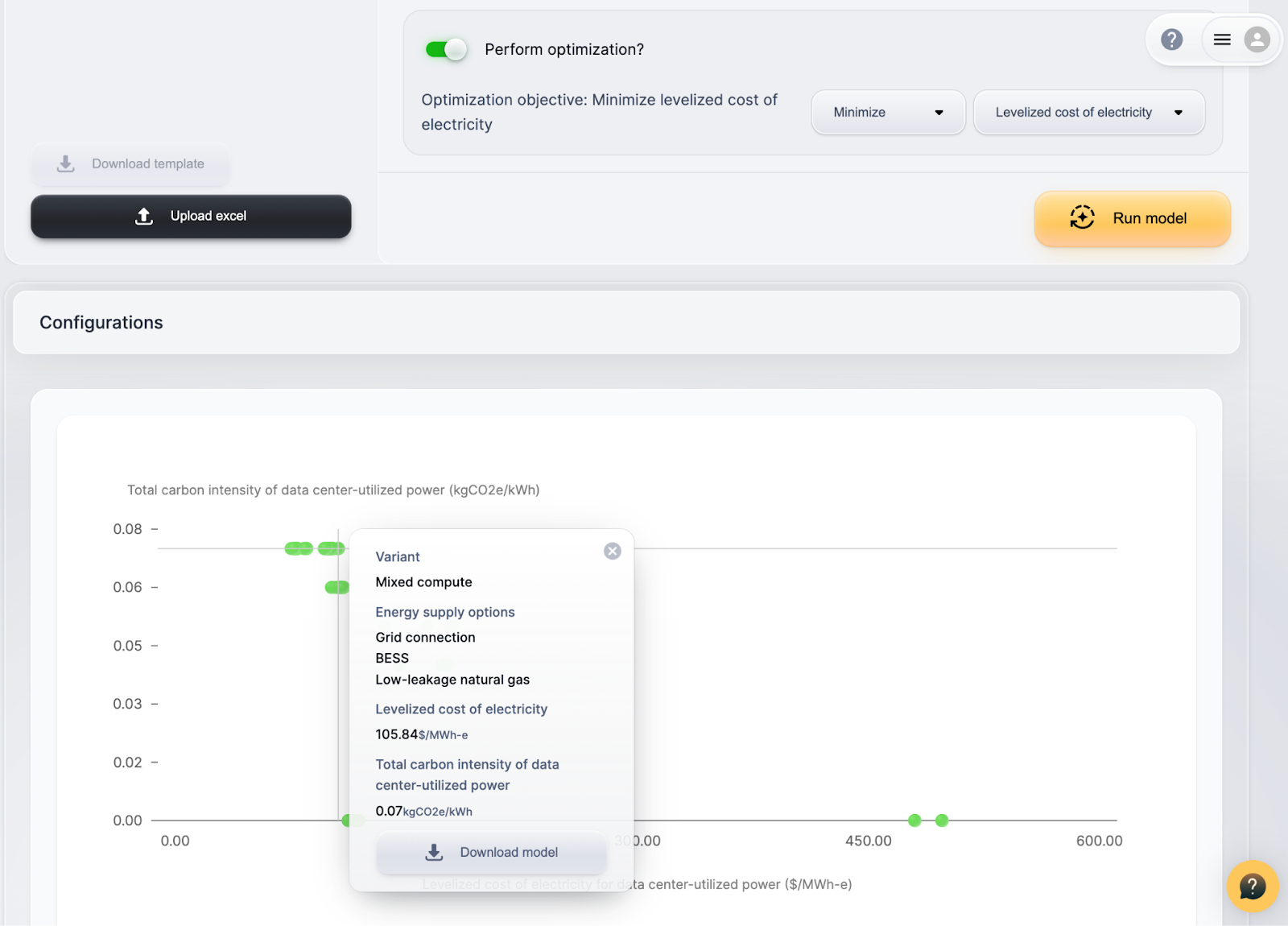
This Excel integration solves the flexibility problem—users can now bring their own sophisticated models and run them anywhere. But it doesn't solve the search problem.
In our next post, I'll walk through how we run your Excel models on our cloud-based GPU-accelerated optimizer. Rather than spend thousands of developer hours converting models for linear optimizers, take your Excel-based non-linear model and just throw powerful GPUs at it. Our technology is able to combine gradient descent with particle swarm optimization over millions of particles for truly exceptional results - out of the box.
The third post will cover something even more ambitious: training custom neural networks to approximate your optimized models. This is how users of our hydrogen product are able to search the globe based on factors including pre-optimized LCOH, and what we are now enabling on a fully custom basis. Once we have a neural network that can mimic your Excel model's optimized behavior, we can run it at every potential site worldwide, across all possible configurations, in a matter of minutes. This creates a true global search capability - the ability to find exceptional opportunities in a sea of merely acceptable options.
What we've built is a fundamental shift in how infrastructure projects get sited. Instead of searching based on individual factors and hoping they combine favorably, you can search based on actual economic performance. Instead of evaluating a handful of obvious sites, you can systematically explore millions of possibilities.
Your Excel model represents deep domain expertise about your specific project economics. Our platform just helps that expertise engage with the full complexity of global geography and energy markets. The results can be surprising - sometimes the best location for your project is one you never would have thought to evaluate.
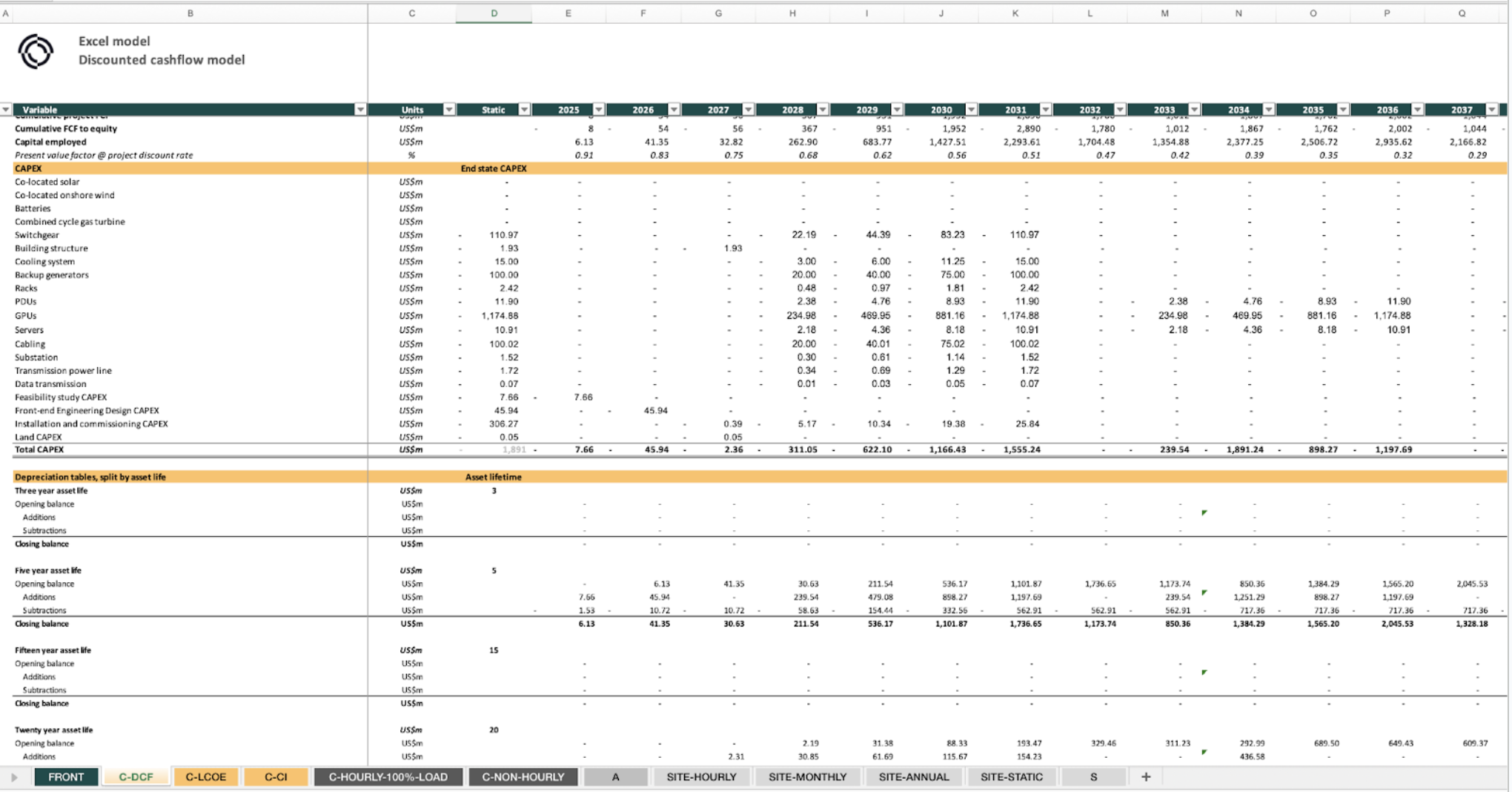
In today’s post, our CTO Will Sonnex introduces the first of his 3-part series unpacking the shift from searching the globe to modeling the globe, and what that means for the future of infrastructure development.

Hi, I’m Jules Carney! As a front-end engineer at Othersphere, I’ve had the chance to work on features that would have felt impossible to bring to the web even a few years ago. We bring together detailed, accurate data from across the globe, and use it to paint a picture with graphs, maps and other visualizations. It brings insights on potential sites that tell meaningful stories for any audience. Needless to say, working on these features is a web developer’s dream come true!
Today I’ll walk through one of my favourite feature sets, because it imparts so much info about a potential site that users looking for a site could feel like they’re on the ground with their measuring tapes.
For a full video of the walkthrough below, please click here!
Let’s say a team wants to build a data center near Boulder, Colorado, but is worried about how the landscape will fit in with their building designs.
First, we’ll make a stop at the main map, where we can filter based on attributes we want the site to have, like average slope, land cost, distance to roads or power sources, and many other crucial factors. In the picture below, we’ve filtered to return sites with only 0-5% built area, and are colouring our heat map based on topography. Less populated areas tend to have steeper slopes, but with just this three second search we see some pale yellow hexes which are nice flat sites with few built-up areas. We could also do another search including our slope requirement filters if we wanted to just get back the hexes with lower slopes.

After we’ve picked a site, we can jump into site analysis. Looking at the left-hand tabs, we can see many ways to evaluate our location, including factors relating to economics, emissions, and fit with local human and environmental factors. These factors are then rolled into detailed project modeling, to bring the whole story together.
But let’s assume that the fundamentals look good, and so we want to move to the footprint tab as concern becomes fitting our data center to a given site.
First we check out a site, and we have a good sized potential footprint to work with, close to high voltage powerlines and data transmission cables.

Let’s assume we want to build a site about 1km square, so we check out an area with our Measure area tool.

It looks decent, and not built up, but let’s dig into the elevation and landscape a little more. We draw a line to measure the distance of our potential site, and we also get an elevation profile, which reveals a pretty significant variation of over 20 metres.

This area looks more promising! We see less variation in the elevation profile.

When we check out the area, it looks like there will be ample space here.

As a project developer I’d likely now loop back to iterate on the project model, using this area analysis and all of our other data to fine tune potential cost, emissions, and planning for aspects of local fit such as protected areas. From there I would likely review details on the land parcels and owners, to get ready for external engagement.
By bringing all of this together in one place, we can pick a great site with no surprises and everything we need for our data center to succeed!

Hi, I’m Jules Carney. a front-end engineer at Othersphere! Today I’ll walk through one of my favourite feature sets, because it imparts so much info about a potential site that users looking for a site could feel like they’re on the ground with their measuring tapes.

Markets are currently fixated on energy access as the near-term bottleneck for data centers... but strong underlying fundamentals are still the key to long-term asset performance.
Water access is one of those fundamental factors, and this MIT Technology Review article on data centers and water constraints in Nevada is well worth a read.
Elements that caught my eye:
- Direct cooling demand could reach 0.9–5.7 billion gal / yr and electricity generation could indirectly add ~15 billion, but actual figures general remain proprietary
- Tribal and local experts are working to highlight the risks of additional pressure on local systems
- Closed‑loop, water‑free air and immersion cooling could lead to meaningful demand reductionsHow does the rest of the world stack up?
Our Othersphere platform includes over 10,000 existing data centers, with World Resources Institute Aqueduct 4.0 basin‑level water stress (0‑5 scale) included as one search attribute.
Today nearly 15 % of data centers operate in the most water stressed locations (4.75 to 5), and the general distribution of data centers implies that water hasn't really mattered to siting... at least to date.
But that may be changing as:
1️⃣ Leading operators raise the bar
2️⃣ Public scrutiny climbs
3️⃣ Cooling tech continues to improve
Reach out if you want to learn more, or see how your site or company portfolio fits in into all of this.

Markets are currently fixated on energy access as the near-term bottleneck for data centers... but strong underlying fundamentals are still the key to long-term asset performance.

OpenAI is looking for new sites around the world for the next Stargate facilities. Is your jurisdiction a good fit?
The ability to rapid search the globe for ideal infrastructure locations based on the characteristics of a site or asset is just one of the user powers made possible by the Othersphere platform.
See here for a short video walkthrough of the Stargate 1 site in our Explorer tool.
In this quick example we instantly find the locations that are a close match with the initial Stargate 1 site in Abilene, Texas—characterized by excellent access to critical infrastructure, low power and gas prices, and a business-friendly operating environment, relative to middle-of-the-pack metrics on factors such as regional water scarcity, grid carbon intensity, and proximity to end users.
But is this the only type of location that can serve the future of AI? Absolutely not.
Are there locations that are even better than Stargate 1? Absolutely, especially as ‘better’ is all in the eye of the beholder.
Each developer, operator, utility, and government will take a different approach to building out the future of compute, and our global search engine for infrastructure enables you to test your own strategies quickly and efficiently.
Want to understand if you have a location that Stargate 1 stakeholders such as OpenAI, Crusoe, Oracle, Microsoft, Blue Owl Capital, J.P. Morgan, SoftBank, MGX, Newmark, or Primary Digital Infrastructure may be interested in?
Want to understand the types of locations that might be appealing to others?
Want to blaze a new trail entirely?
If you want to move fast but not break things, reach out to learn more.

OpenAI is looking for new sites around the world for the next Stargate facilities. Is your jurisdiction a good fit? The ability to rapid search the globe for ideal infrastructure locations based on the characteristics of a site or asset is just one of the user powers made possible by the Othersphere platform.
